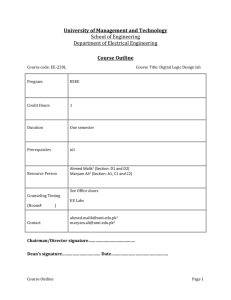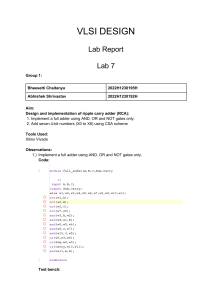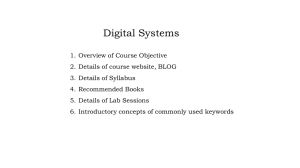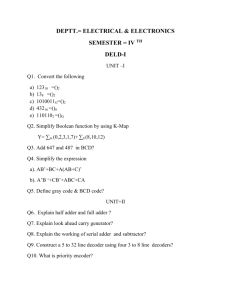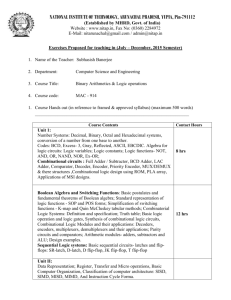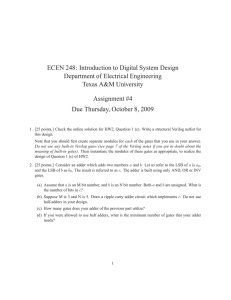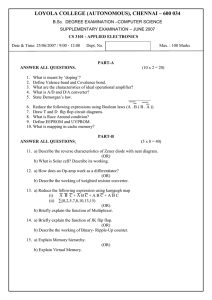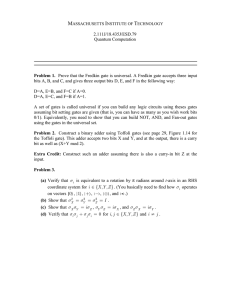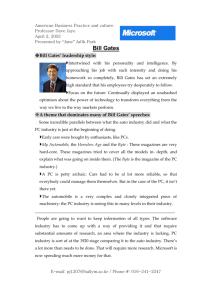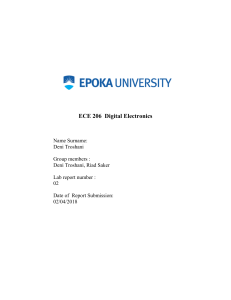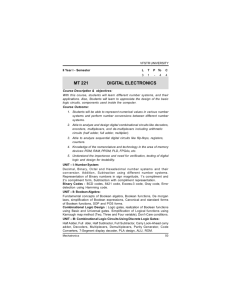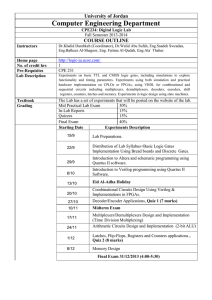Course Outline - UMT Admin Panel
advertisement
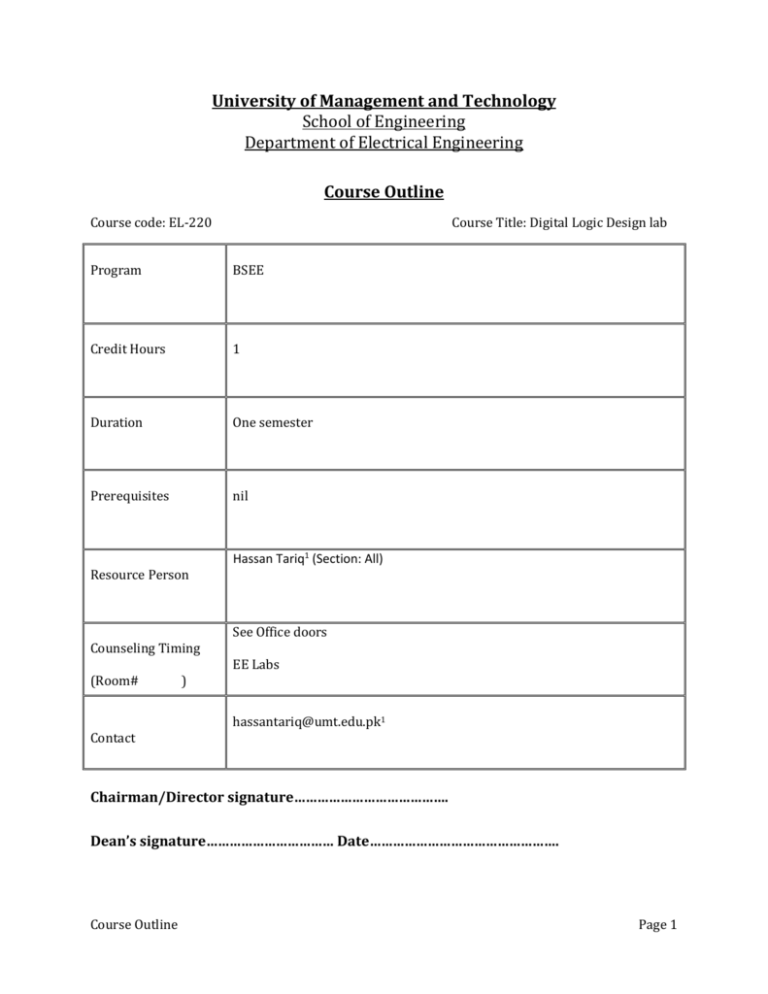
University of Management and Technology School of Engineering Department of Electrical Engineering Course Outline Course code: EL-220 Course Title: Digital Logic Design lab Program BSEE Credit Hours 1 Duration One semester Prerequisites nil Resource Person Hassan Tariq1 (Section: All) See Office doors Counseling Timing (Room# EE Labs ) hassantariq@umt.edu.pk1 Contact Chairman/Director signature…………………………………. Dean’s signature…………………………… Date…………………………………………. Course Outline Page 1 Learning Objective: The objective of this lab is to introduce students with basic digital logic design concepts and to implement them as well. The topics covered include numbers systems, codes, Boolean algebra, combinational logic, arithmetic, MSI logic circuits, latches/flip flops, counters/registers, sequential circuit design, memory devices and digital electronics. These objectives conform to the ones listed in HEC guidelines as a, d, e, & f. In accordance with HEC curriculum outcomes a, b, d, e, g, h & i, students at the end of the course should be able to To practically knows and perform the DLD concepts To have thorough understanding of digital logic design principles To have basic problem solving and troubleshooting techniques Learning Methodology: Practicals, interactive, participative Grade Evaluation Criteria Following is the criteria for the distribution of marks to evaluate final grade in a semester. Marks Evaluation Marks in percentage Lab Manuals & Performance: Final Viva or Quiz + Performance: Total 40% 60% 100% Recommended Text Books: Text book: Digital Design,4th Edition by Morris Mano and Michael D. Ciletti Reference Book: Digital Design, Principles & Practices, 3rd Edition by John F. Wakerly Course Outline Page 2 Calendar of Course contents to be covered during semester Course code: EL-220 Course title: Digital Logic Design Lab Relevance to Week Course Contents Theory Course Verification of basic binary operators and basic theorems using gates TB: Article 2.2 – 2.8 1 TB: Article 3.7 Universality of NAND and NOR gates 2 Implementation of Full Adder and 4-bit Parallel Adder using IC 7483 TB: Article 4.5 3 Implementation of Full Subtractor and 4-bit Parallel Subtractor using IC 4 TB: Article 4.5 7483 Design of combinational circuits TB: Article 4.2 5 Implementation of code converters using gates TB: Article 4.4, 4.6 Implementation of Encoder and Decoder using IC 74138 & 74148 TB: Article 4.9 – 4.10 6 7 Implementation of Multiplexer and Demultiplexer IC74151&74138 8 Verification of LATCH and FLIP FLOP operation using gates and flip flop’s 9 10 IC TB: Article 4.11 TB: Article 5.3 5.4 Design of Sequential Circuits TB: Article 5.8 Implementation of series and parallel registers TB: Article 6.1 – 6.2 Implementation of asynchronous and synchronous counters TB: Article 6.3 – 6.4 11 12 TB: Article 7.2 Implementation of RAM and ROM using gates and Static RAM IC 13 Course Outline Page 3 Introduction to basic syntax of verilog and gate-level-modeling using xilinx ise tools Material will be provided 14 Course Outline Page 4
